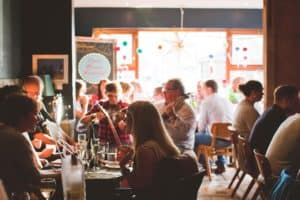The Scottish Clans: Highland Games and Heritage Sites Explored
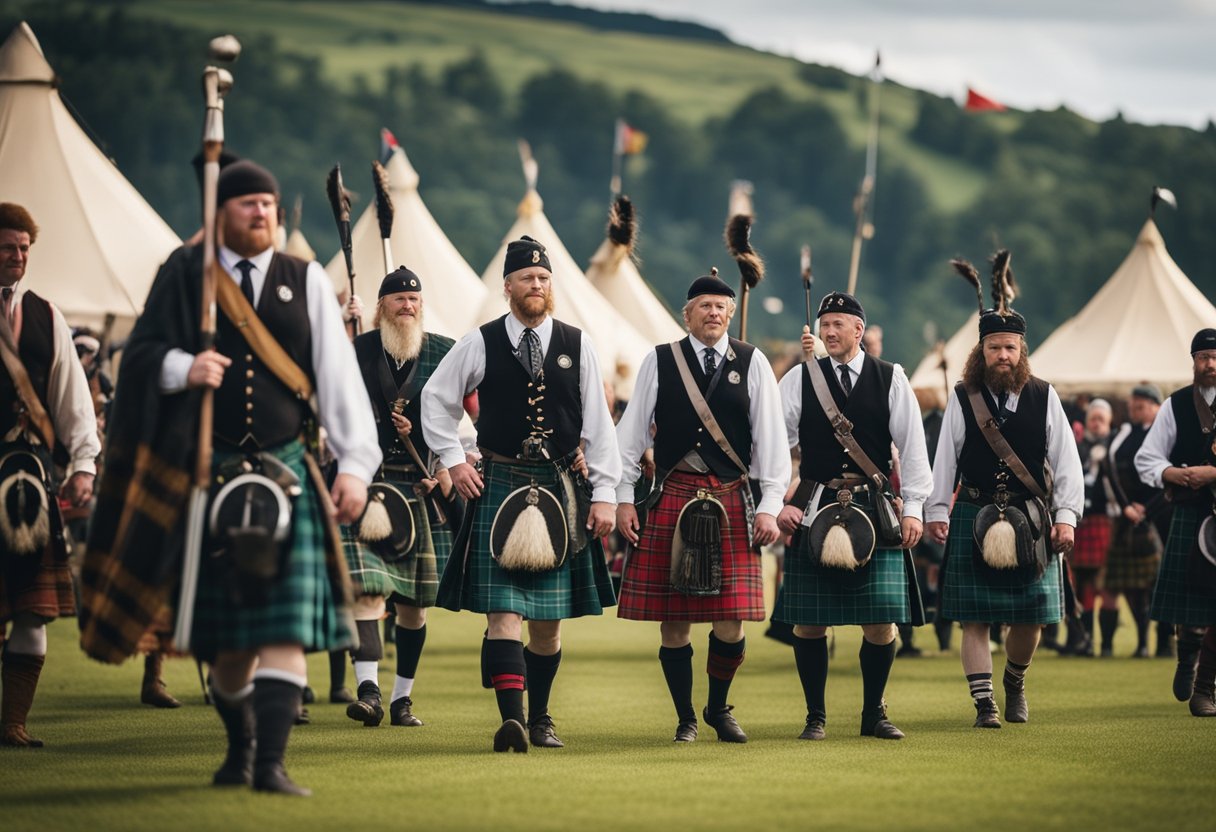
Updated On: April 26, 2024 by Eman Sameh
The Scottish highland games are a captivating exhibition of Scotland’s athletic, cultural, and historical essence. Stemming from the rich fabric of clan traditions, these games are a potent symbol of Scotland’s heritage. The Scottish clans have shaped the social structure of Scotland for centuries, with their influence permeating through the Highland Games. These events not only showcase the physical prowess of competitors but also serve to strengthen the bonds of community and celebrate the spirit of Scotland’s ancestry.
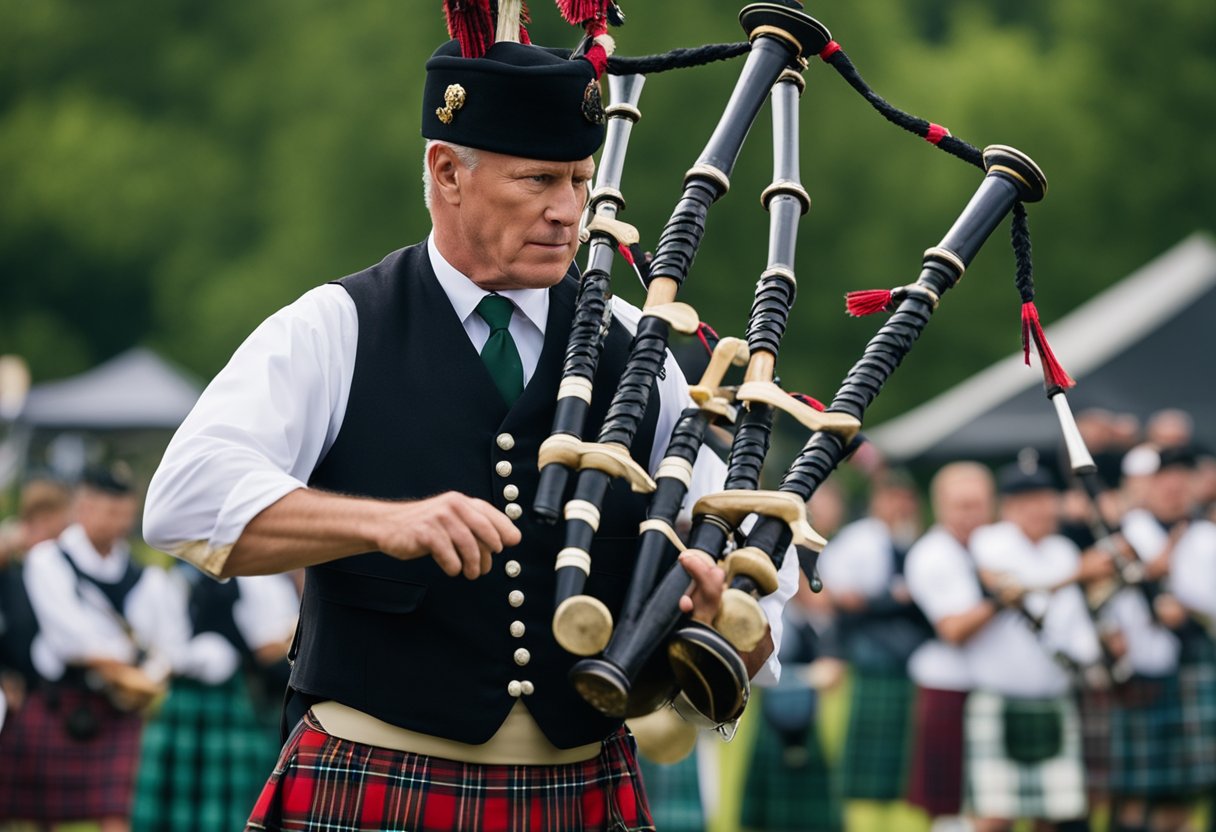
Heritage sites and museums across Scotland offer deeper insights into the lives and governance of the historic clans, displaying artefacts that tell the tales of Scottish chieftains and their legacies. Adorned in tartan and kilts, attendees are immersed in the vibrant resurgence of Gaelic language and poetry, echoing the past. Through this, we not only honour the history but also contribute to the contemporary identity and economy of modern Scotland, with each clan gathering sparking renewed interest and pride in Scottish traditions.
History of the Scottish Clans
The Scottish clans encapsulate a pivotal component of Scottish heritage, each with its distinct history, traditions, and symbols that have shaped their identities over centuries.
Origins and Kinship
Clans, in essence, were extended kinship groups among the Gaelic peoples of Scotland. Each clan heralded from common ancestry and were bound together by the shared bonds of family and kinship. The origins of these clans were rooted deeply in the Highlands, where they flourished and developed a unique Gaelic culture which included their own language, laws, and customs.
Clan Chiefs and Chieftains
At the head of each clan stood the chief, seen as the representative and guardian of the clan’s unity and welfare. These chiefs reigned across the Highland landscapes with a respect that bordered on reverence, and the chieftains acted as the chief’s lieutenants. Together, they upheld the traditions and protected the interests of their clans with a power often recognised by kings and monarchs.
Tartans and Surnames
Unique tartans and surnames were emblematic identifiers of each clan. Tartans, with their particular patterns and colours, served as distinguishable symbols, with certain designs being formally recorded by the end of the 18th century. Surnames, often derived from the clan’s geographic connections or from the names of the chiefs, became badges of clan heritage and pride.
Clan Alliances and Wars
Throughout history, clans formed strategic alliances or found themselves embroiled in wars. These alliances could be through marriage, shared interests, or mutual enemies. Conversely, intense feuds and disputes over territory or power led to fierce battles, the outcomes of which significantly shaped the sociopolitical landscape of the Highlands.
Our engagement with Scottish history at Connolly Cove recognises the value of preserving such rich cultural narratives and offering insights into the clan societies that have influenced not just Scotland, but the world.
Highland Games: A Showcase of Scottish Culture
The Highland Games are an embodiment of Scottish cultural pride, spanning traditional athletic competitions to the colourful display of dance and music. They serve as a repository of Scotland’s heritage, showcasing the vigour of Scottish athletic traditions and the rich pageantry of clan customs.
Traditional Athletic Events
In the realm of athletic prowess, the Scottish Highland Games stand out for their distinct events. Caber toss, perhaps the most iconic, sees athletes flipping a tall, heavy log end over end. The hammer throw and shot put further test the strength and skill of competitors, with roots deeply embedded in Scotland’s history. These events draw athletes and spectators alike, eager to witness feats of strength that epitomise traditional Highland valour.
Dance and Music
Beyond athletic feats, Scottish clan culture thrives through expressive dance and music. The sound of piping is synonymous with the Games, with performers often competing in both solo and band formats. Highland dancing, featuring the precise and energetic movements, is a competitive highlight, celebrating Scottish folklore and tradition through performances that have evolved over generations. Through these artistic expressions, the continuity of Gaelic culture is vibrantly maintained.
Ceremonial Aspects
The Highland Games are steeped in ceremonial significance, with elements of ancient festivals and clan gatherings. The wearing of tartan is a visual expression of clan identity, where participants and attendees don the traditional dress, honouring their lineage and the history of the clans. These Games aren’t solely competitions; they double as festive gatherings where Scottish kinship and culture are vibrantly alive, fostering a sense of community among participants and guests from around the world.
The Role of Clans in Modern Scotland
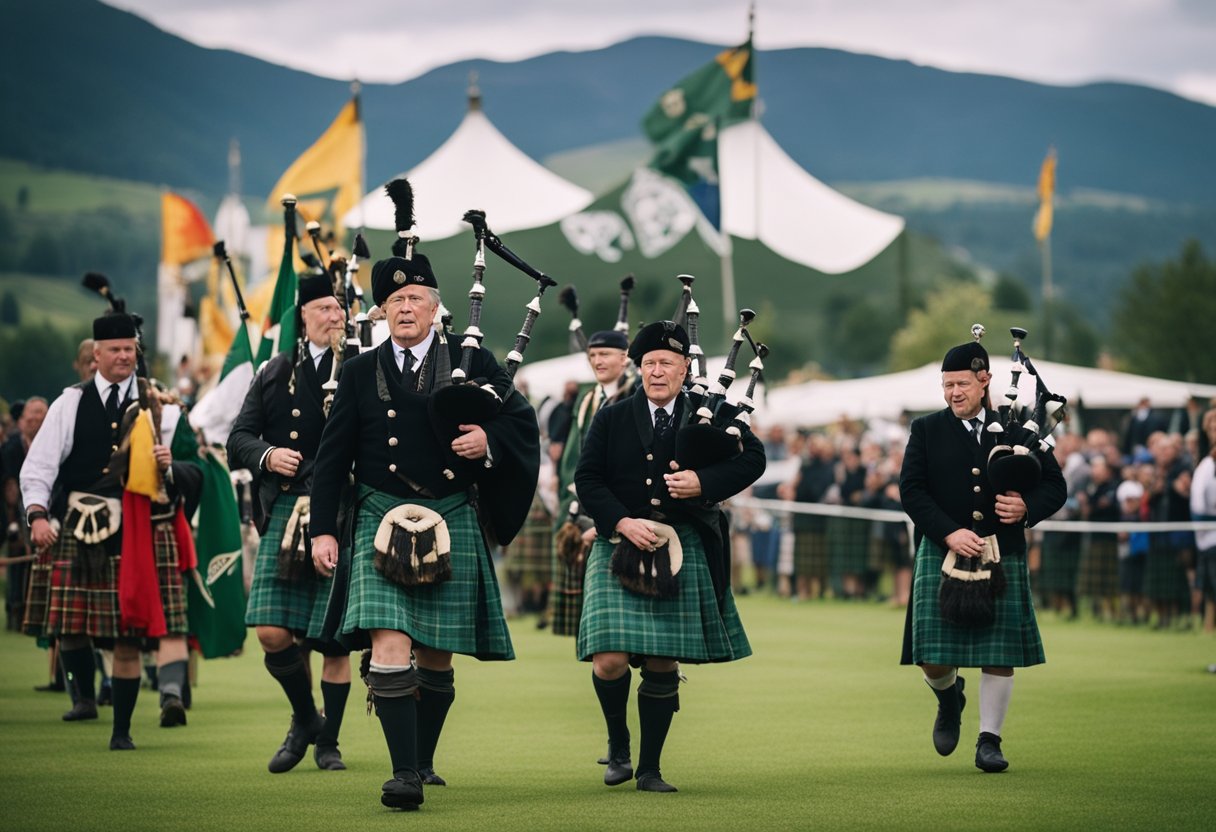
Clans continue to play a crucial role in Scotland’s cultural fabric, influencing both local traditions and the passionate Scottish diaspora globally.
Clan Societies and Gatherings
Clan societies remain vibrant, serving as custodians of Scottish heritage. They organise events like the Highland Games that include a “Parade of Tartans”, fostering community and honouring ancestral connections. These gatherings often occur in Scotland and places with significant Scottish emigration, such as Australia, Canada, and the United States, strengthening bonds through genealogical research, cultural activities, and kinship.
The Scottish Diaspora
The identity of the Scottish diaspora is deeply intertwined with clan heritage. Clan societies across the globe, including Australia, Canada, and the United States, provide a sense of belonging for those tracing their genealogy back to Scotland. Through these organisations, cultural traditions and clan connections are sustained, promoting Scottish identity and influencing cultural practices in the diaspora communities.
Highland Games: Techniques and Competitions
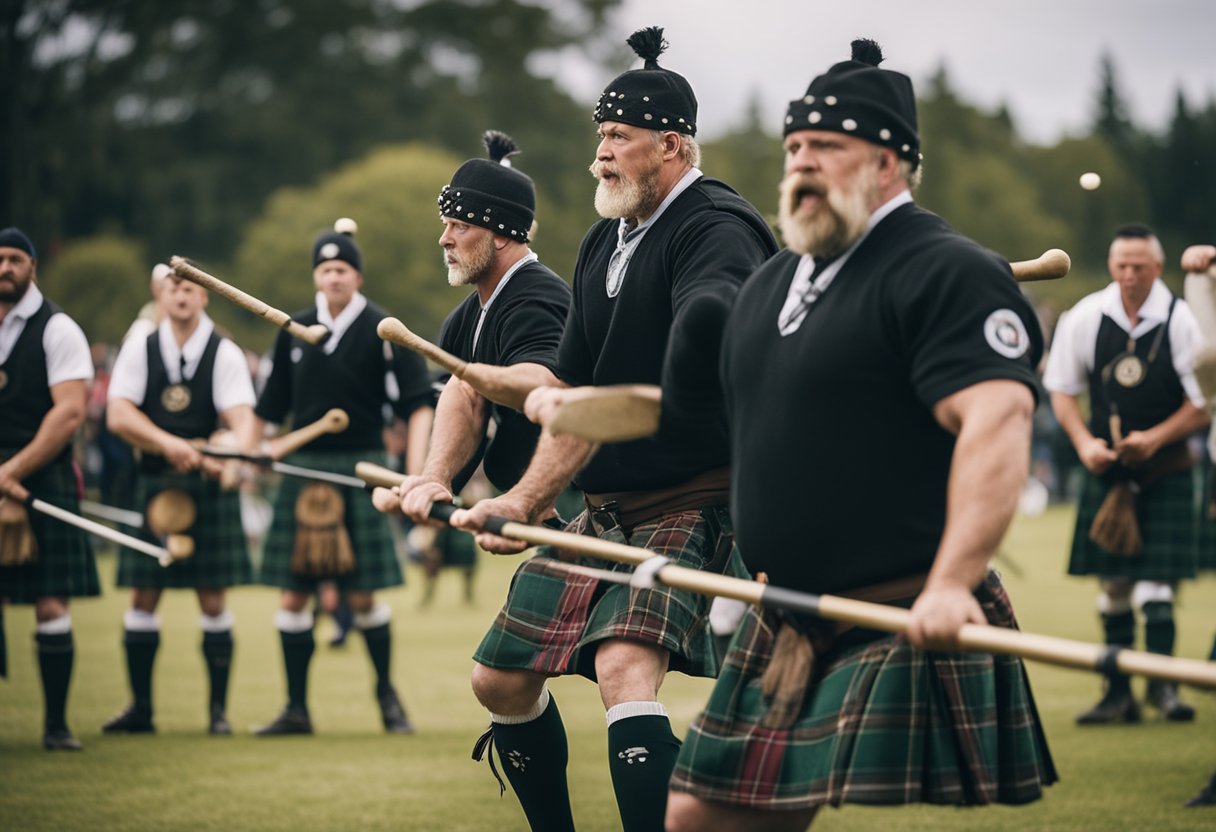
The Highland Games are a quintessential display of Scottish culture, showcasing a blend of athletics and customs that highlight strength and tradition. These games test competitors’ abilities in a series of events rooted in Scottish history.
Caber Tossing
In caber tossing, athletes lift and throw a large wooden log known as a caber. The objective is not simply to throw the caber the farthest distance but rather to achieve the straightest end-over-end flip, ideally landing in the 12 o’clock position relative to the initial run. This requires immense strength and impeccable technique to control the full length log, usually weighing about 175 pounds, crafted from Scot Pine.
Hammer Throwing
Hammer throwing is a traditional test of power where competitors throw a heavy weight attached to a long handle. Participants must whirl the hammer around their heads and release it at the optimal moment for maximum distance. The hammer weighs 16 or 22 pounds for men and between 12 and 16 pounds for women, making it a true testament to an athlete’s strength and agility.
Highland Dancing
Contrasting with the feats of strength, Highland dancing is a competitive and artistic display steeped in Scottish culture. Dancers perform precise and quick movements, demonstrating remarkable agility and control. Patterns in dances have historical significance, often recounting tales of Scottish warriors or traditional customs. Competitions are judged based on the execution of steps, timing, and overall deportment in what is a visually stunning showcase of Scottish heritage.
Clan Regalia and Scottish Dress
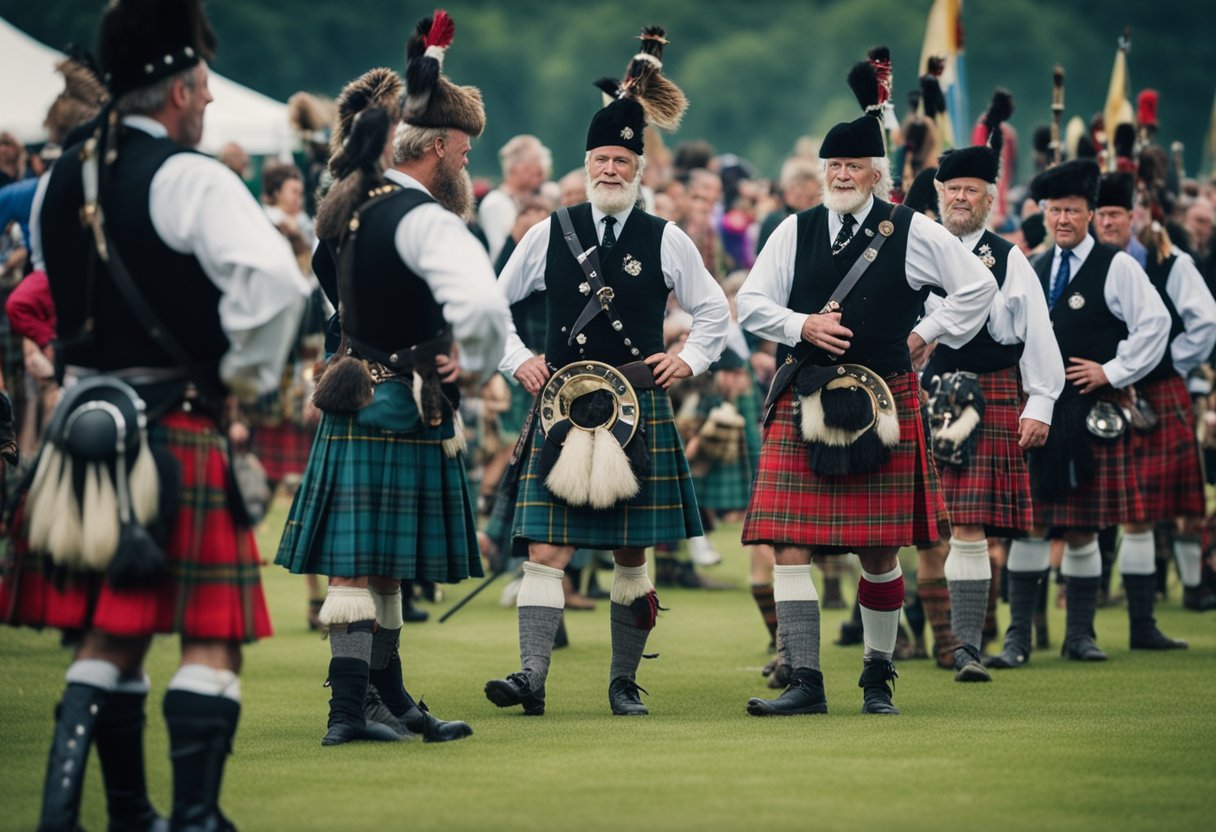
We see Scottish clans through a unique lens, particularly when examining their distinct attire and regalia, which encompass the vibrant kilts and tartans, as well as the ceremonial wear associated with bagpipe music.
Kilts and Tartans
Kilts, the knee-length garment unmistakably associated with Scottish culture, have deep roots in the heritage of the clans. Each clan’s tartan is more than just a pattern; it’s a testament to familial lineage and communal identity. The tartan is typically made from woven wool and is characterised by its crisscrossing horizontal and vertical bands in multiple colours.
- Kilts: Constructed from tartan fabric, kilts are crafted to represent a clan’s distinct colours and patterns. A kilt’s unique design can signify the clan affiliation of the wearer.
- Tartans: A tartan’s arrangement of colours and lines can vary significantly, from the traditional “sett” to the muted tones of hunting patterns. Various items of clothing, such as kilt jackets and waistcoats, might be fashioned from tartan materials to complement the Highland dress.
Bagpipes and Piping Attire
Bagpipes are a stirring symbol of Scottish heritage, integral to our cultural ceremonies and historical moments. Piping attire, while functional, also bears a ceremonial significance, reflecting the storied past of Scottish martial history.
- Bagpipes: An iconic Scottish instrument, the bagpipes are central to various cultural festivities, including weddings, funerals, and, of course, the Highland Games. The instrument’s role in Scottish clans is profound as it often led troops into battle and is still a resounding emblem of Scottish culture.
- Piping Attire: Pipers traditionally wear a specialised uniform that includes elements of the clan tartan. This can extend to a bagpipe cover or the tartan flashes worn with the kilt hose, showcasing the expanse of tartan patterns and the pride pipers take in their clan’s history.
Scottish Heritage Sites and Museums
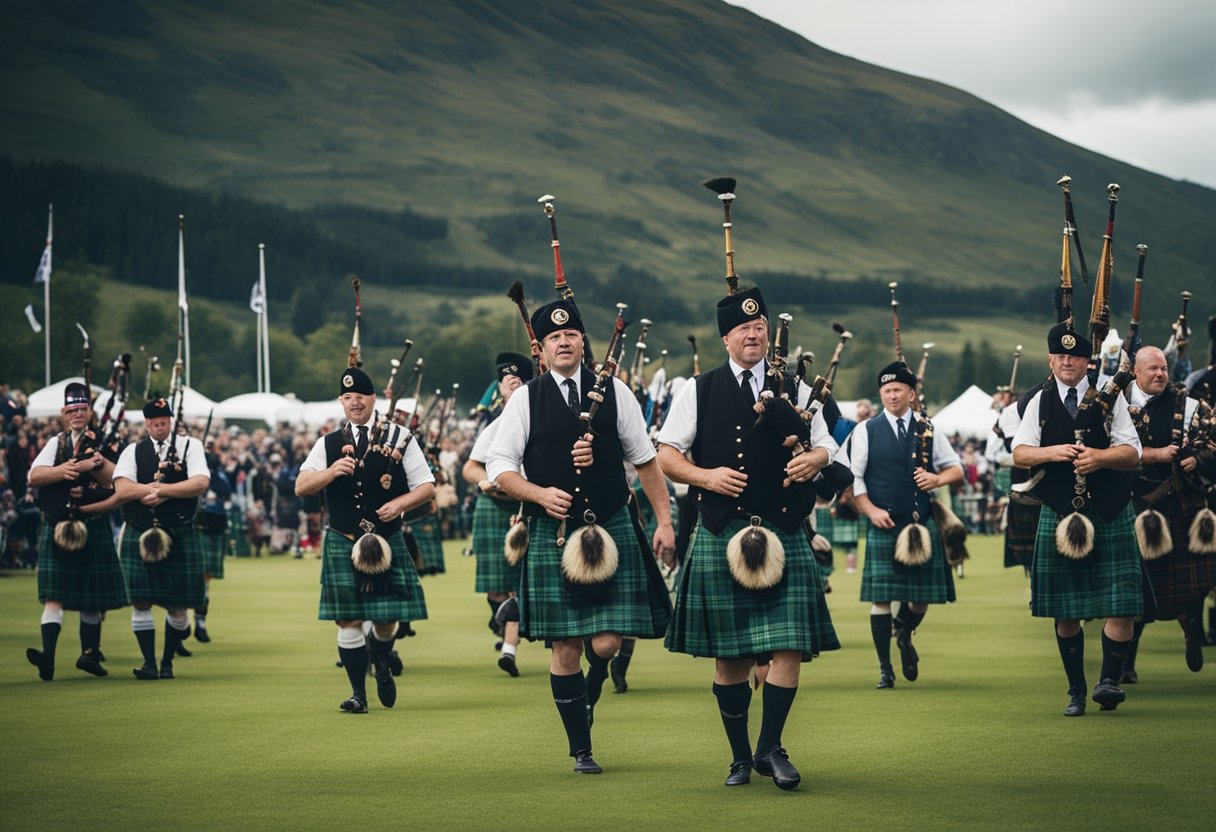
Scotland’s rich tapestry of history is vividly illustrated through an array of heritage sites and museums. Each location offers a unique doorway to understanding the cultural legacy and historic depth of clan heritage and Scottish traditions.
Castles and Battlefields
Scotland’s landscape is dotted with historic castles, each telling a tale of the nation’s past. Sites like Edinburgh Castle, which has played a role in numerous conflicts, offer a commentary on Scotland’s history. Meanwhile, the rolling hills of Culloden hold deep significance, as they were the location of the last major battle fought on British soil, marking the end of the Jacobite uprising in 1746. These sites highlight the architectural prowess and the strategic importance of their locations through centuries of Scottish history.
- Edinburgh Castle: is a historic fortress that dominates the skyline of Edinburgh, reflecting both Scotland’s regality and turbulent past.
- Culloden Battlefield: A sombre moorland, now a memorial site, known as the site of the final confrontation of the Jacobite rising.
Cultural Exhibitions
Scotland’s cultural exhibitions provide insightful windows into Scottish clans’ everyday life, art, and rituals. Venues such as the National Museum of Scotland encapsulate a vast array of Scottish historical artefacts, while local and clan-specific heritage centres, such as the one dedicated to Clan Donnachaidh, offer more intimate insights into individual clan histories and traditions.
- National Museum of Scotland: Home to a wealth of treasures, offering insights into Scottish antiquity, culture, and natural history.
- Clan Heritage Centres: These specialised museums display clan histories and artefacts and celebrate traditions unique to each Scottish clan lineage.
By visiting these castles, battlefields, and cultural exhibitions, we gain a profound understanding of the rich historical backdrop against which Scotland has developed its enduring identity.
Preservation of Gaelic Language and Poetry

In the tapestry of Scottish culture, the Gaelic language and poetry stand as vibrant threads, embodying the nation’s rich history and identity. We recognise their critical role and the collective efforts to preserve this invaluable heritage.
The Role of Bards in Clan History
Historically, bards were esteemed within the clan system, acting as preservers and transmitters of Gaelic culture. They composed poetry that was essential to the clans’ identity, celebrating their achievements and chronicling their histories. Bards served as entertainers, historians, and genealogists, their verses an integral part of the oral tradition that shaped Scottish identity over centuries.
Education and Revival Efforts
Recently, a concerted push towards the education and revival of the Gaelic language has emerged. Initiatives such as establishing Gaelic-medium schools and college courses aim to immerse students in the language, ensuring that Gaelic remains a living tongue. Furthermore, literature and arts festivals celebrate poetry and music, fostering a renewed appreciation of traditions among younger generations. These education efforts are fundamental pillars in the ongoing mission to sustain and nurture Scottish culture for future generations.
Economic Impact of Clans and Highland Games
The Scottish Clans and Highland Games are not only vibrant expressions of cultural heritage but also significant drivers of Scottish economic activity in Scotland. Our analysis will focus on their effects on tourism and related merchandising, clearly showing their fiscal importance.
Tourism and Festivals
Tourism associated with Highland Games and clan gatherings contributes substantially to Scotland’s economy. Events like the Grandfather Mountain Highland Games draw visitors from around the globe, creating a surge in demand for accommodation, dining, and travel services. A study has indicated that events such as the Highland Games in North Carolina can significantly affect visitor expenditure and, by extension, support local businesses and employment.
In Scotland itself, festivals celebrating Scottish heritage, including various Highland Games, add to the tourism offering, helping to extend the travel season beyond the traditional summer months. This results in a more steady income for tourism-related businesses and sustains jobs in the sector.
Merchandising and Products
Clan-related merchandise and products rooted in the Scottish tradition provide another economic stream. From tartan fabrics to clan crests and other memorabilia, these items allow individuals to showcase their ancestral pride and support local artisans and retailers. The sale of these items at Highland Games and online platforms helps propagate Scottish culture internationally while contributing to the domestic economy.
Products bearing clan insignia or symbols related to the Highland Games can become significant commodities for domestic consumption and export markets. They also foster a connection between Scotland and the Scots diaspora, who are often keen to own a piece of their heritage. The economic impact here can be particularly noted in the run-up to and during clan gatherings and Highland festivals, where merchandise serves as both a symbol and a souvenir.
The Influence of Public Figures on Clan Identity

The identity of Scottish clans has been notably shaped by the influence of key public figures such as Queen Victoria and Sir Walter Scott, who played instrumental roles in preserving and celebrating Scottish culture and traditions.
Queen Victoria’s Role
Queen Victoria exhibited a profound fascination with Scotland, which had a lasting impact on the perception and pride of Scottish clans. Her deep appreciation and patronage led to what is often termed the Victorian Era revival of Scottish customs and heritage. The Queen’s adoption of Balmoral Castle as a royal residence emphasised her personal connection to Scotland and established the estate as a symbol of Scottish aristocracy and culture. Her influence extended to the embellishments within Balmoral, where tartan patterns and other Scottish decorations were prominently featured.
Literary Contributions by Walter Scott
Sir Walter Scott’s contributions to Scottish clan identity are indelible. As a prolific writer, his works played a significant role in romanticizing clan history and culture. His novels and poems provided a narrative that celebrated the valour of chieftains and the resilience of the clans. Scott’s organisation of the 1822 visit of King George IV to Edinburgh was a spectacle of historical re-enactment where clansmen paraded in tartan, thus reaffirming their ancestral identity. This visit breathed new life into the cultural significance of tartan and clan affiliations, reinvigorating the historical legacy of Scottish clans and influencing their identity to this day.
The Structure and Governance of Clans

The Scottish Highland clans are defined by their unique historical structure and governance, which remains a topic of interest in Scottish society and culture today.
Historical Clan Hierarchy
The traditional structure of the Highland clans was distinctly hierarchical. At the very top, the clan chief commanded absolute loyalty and acted as the ultimate authority within the clan. The chief was the embodiment of the clan’s honour and provided guidance and protection to members. Directly below the chief were the chieftains, who were responsible for overseeing specific areas or branches of the clan and ensuring their respect towards the chief. This societal structure was underpinned by a fierce pledge of allegiance from clan members to their leadership, with bonds of kinship reinforcing these connections.
Contemporary Clan Organisations
Although the functional governance of clans has changed in our modern era, contemporary clan organisations remain guardians of clan heritage and tradition. These organisations, such as clan societies and associations, often play a crucial role in preserving clan history and fostering community among dispersed clan members worldwide. They typically operate democratically and are involved in organising events, such as Highland Games, and in maintaining records relevant to clan lineage and heritage sites that are significant to the clan’s collective memory.
The Renaissance of Scottish Clans
The rejuvenation of Scottish clan culture has seen a marked increase in global connections and local celebrations. This resurgence is not only a testament to the enduring legacy of Scottish heritage, but also a renewal of cultural pride and clan identity.
Global Clan Networks
We’ve witnessed the establishment of extensive global networks as Scottish clans rekindle ties that span the world. Many clans have created formal associations and websites that serve as hubs for dispersed members. These networks facilitate various clan activities, including international gatherings and genealogical research, strengthening the clan identity and preserving our rich Scottish heritage. The bonds established through such associations provide a sense of belonging and contribute significantly to the protection and propagation of clan heritage.
Cultural Revival and Celebrations
Cultural reawakening forms the core of the clan renaissance. Festivals like the Highland Games have become pivotal in showcasing Scottish clan culture, embodying the spirit of the clans through traditional sports, music, and dance. These events act as vibrant touchstones of Scottish identity, bringing to life the customs and artistry that have defined our culture for centuries. Through these celebrations, we pay homage to our ancestors and provide a dynamic context for our culture to reach new generations. Clan gatherings and Scottish festivals around the world not only celebrate our past but continue to sculpt our shared cultural landscape.
Frequently Asked Questions
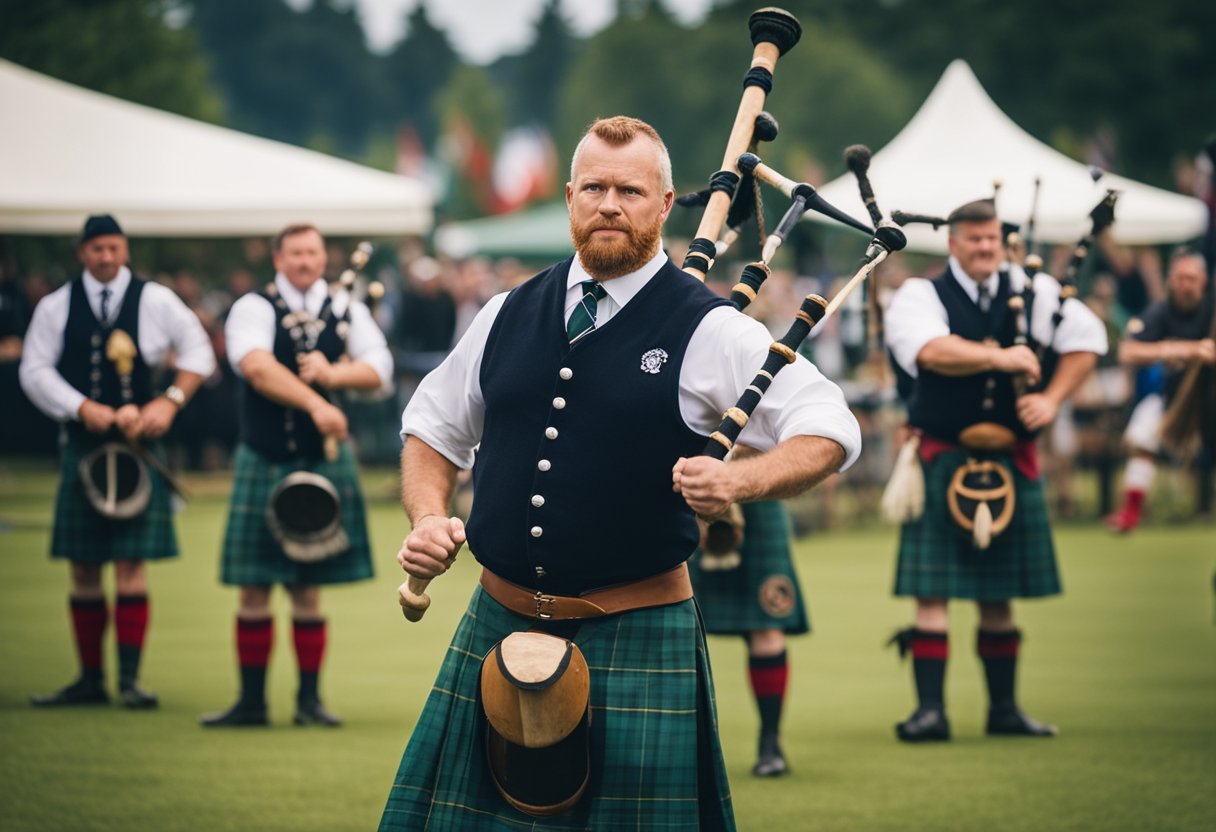
This section’ll address some of the most common inquiries about Scotland’s Highland Games and Clan heritage sites.
What are the top-rated Highland Games events to attend in Scotland?
The Cowal Highland Gathering is widely recognised for attracting the largest number of competitors and is a prime event to attend. Other significant games include those held in Braemar and Dunoon, which offer a full experience of Scottish culture and athleticism.
Which activities are typically included in the Highland Games?
Highland Games traditionally feature a mix of cultural and athletic events, such as caber tossing, hammer throwing, and tug-of-war. These challenges are supplemented by dancing, piping competitions, and showcases of Scottish clan history.
Where can one find a comprehensive map of heritage sites related to the Scottish Clans?
The Library of Congress provides a resource guide that may include maps or references to clan heritage sites. Such resources are invaluable for those interested in exploring the historical territories and landmarks of the Scottish clans.
How can one obtain tickets to the Scottish Highland Games in 2024?
Tickets for many Highland Games events can typically be purchased online through the official event websites. It’s advisable to check the specific games’ web pages early, as these events can sell tickets out quite fast due to their popularity.
What is the history behind the oldest Scottish clans?
Scottish clans represent centuries-old family groups originally led by chieftains. Their history includes roles as local governance bodies, engaging in alliances and conflicts throughout the centuries, with some clans dating back to the 12th century.
How can one trace the locations of clans affected by the Highland Clearances?
Our collective understanding of the Highland Clearances’ impact on clans can be gained through historical texts and online databases. Specialized websites dedicated to Scottish history and ancestry can guide you through the affected areas and the subsequent displacement of clan members.




